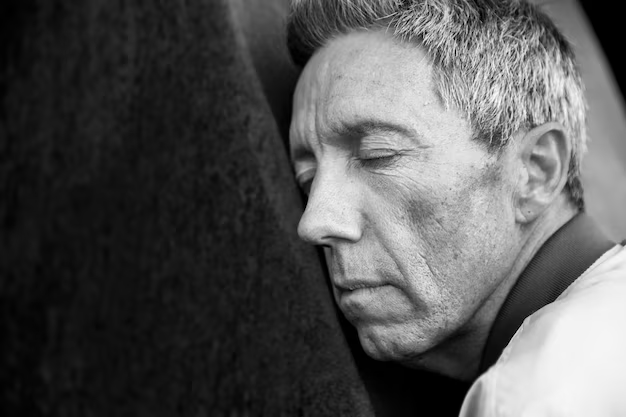Recognizing Depression in Older Adults: A Comprehensive Guide for Caregivers and Families
Depression is often perceived as a condition impacting the younger demographic, yet it is an increasingly significant issue among older adults. In this engaging and informative guide, we delve into the intricacies of recognizing depression in elderly populations. Understanding how it manifests in older adults is crucial for timely intervention, improving quality of life, and fostering mental health resilience.
🧠 Why Understanding Depression in Older Adults Matters
The landscape of depression varies with age due to a myriad of factors such as physical health conditions, social isolation, and life transitions. Many older adults experience significant shifts in their lifestyles, including retirement and the loss of loved ones, which can exacerbate feelings of sadness or hopelessness.
Key Points:
- Prevalence: While depression is not a normal part of aging, its prevalence cannot be ignored.
- Different Manifestations: Symptoms in older adults may differ from younger individuals, requiring adapted recognition strategies.
- Health Impact: Depression in older adults can complicate existing health issues, impacting recovery outcomes and overall well-being.
🚶♂️ Recognizing the Symptoms: What to Look For
Depressive symptoms in older adults can be nuanced and may overlap with other age-related concerns. Below are typical indicators that caregivers and families should watch for:
1. Emotional Symptoms
- Persistent Sadness: Ongoing expressions of sadness, emptiness, or hopelessness.
- Irritability or Fluctuating Moods: Uncharacteristic irritability or rapid mood changes.
- Loss of Interest: A noticeable reduction in enthusiasm for previously enjoyed activities or social interactions.
2. Physical Symptoms
- Changes in Appetite or Weight: Unexplained weight loss or gain due to altered eating habits.
- Sleep Disturbances: Insomnia, excessive sleeping, or disrupted sleep patterns.
- Fatigue: Chronic feelings of fatigue or reduced energy levels.
3. Cognitive Symptoms
- Memory Issues or Concentration Problems: Difficulty focusing, remembering details, or making decisions.
- Indecisiveness: Challenges in making everyday choices.
4. Behavioral Changes
- Social Withdrawal: Avoidance of social interactions or declining participation in social activities.
- Neglect of Personal Hygiene: A lapse in maintaining personal grooming standards.
🔄 Common Triggers and Risk Factors
Understanding the underlying causes can aid in differentiating depression from other health issues:
1. Health-related Factors
- Chronic illness or pain.
- Medication side effects—certain medications prescribed for age-related conditions can have depression as a side effect.
2. Psycho-Social Stressors
- Significant Life Changes: Transitioning into retirement or moving to a new living environment.
- Loss and Bereavement: The death of friends, family, or a spouse.
3. Social Isolation
- Limited social interaction due to mobility constraints, loss of driving ability, or separation from family.
🌿 Strategies for Supporting Older Adults
Empowering older adults to tackle depression involves creating a supportive environment and implementing practical strategies to promote mental well-being.
Encourage Open Communication
- Foster an atmosphere of trust where older adults feel comfortable discussing feelings and concerns.
- Encourage them to share daily experiences to help them articulate thoughts, which can be therapeutic.
Engage in Social Activities
- Help integrate social interactions into daily routines, whether through community centers, senior clubs, or virtual hangouts.
Promote Physical Activity
- Physical exercise can elevate mood and improve physical health, but it should be tailored to the individual’s ability and preference.
Foster Healthy Routines
- Encourage regular sleep patterns and balanced nutrition.
- Routine provides a sense of stability and predictability, helping reduce anxiety.
🤝 Seeking Professional Help
Sometimes, professional intervention is necessary. Here’s when to consider seeking expert advice:
Indicators for Professional Intervention
- If symptoms persist for several weeks and disruption in daily life occurs.
- When there’s a talk of self-harm or any signs of suicidal ideation.
Types of Professional Help Available
- Therapy: Different modalities, such as cognitive-behavioral therapy (CBT) adapted for older adults.
- Medication: Antidepressants may be considered, keeping in mind potential interactions with existing prescriptions.
Working with a Geriatric Specialist
- Specialization in older adults’ mental health can provide tailored interventions.
📋 Quick Reference: How to Support Your Older Loved One 💡
- 💬 Communicate: Encourage open discussions about feelings.
- 🏃 Engage in Light Activity: Promote movement suitable for their health.
- 🎭 Participate in Events: Join social gatherings or community events.
- 🕒 Maintain Routine: Establish consistent daily habits.
- 🔍 Professional Help: Know when to involve a mental health professional.
Bringing It All Together
Recognizing depression in older adults is a critical step in ensuring their mental health and emotional well-being. By understanding symptoms, acknowledging triggering factors, and knowing how to offer appropriate support, caregivers and families can make a significant difference in the lives of their older loved ones. Being vigilant and empathetic goes a long way in breaking the stigma surrounding mental health and creating a nurturing environment for older adults to thrive.
Ultimately, knowledge is empowerment. It not only facilitates compassionate care but also enhances the quality of life for those we cherish most.

Related Topics
- How To Address Cognitive Decline In Seniors
- How To Address Loneliness In Seniors
- How To Create a Mental Health Care Plan For Seniors
- How To Encourage Seniors To Engage In Creative Hobbies
- How To Encourage Social Interaction In Seniors
- How To Find a Therapist For Seniors
- How To Handle Memory Loss In Seniors
- How To Help Seniors Cope With Grief And Loss
- How To Manage Anger And Frustration In Senior Years
- How To Prevent Isolation In Older Adults